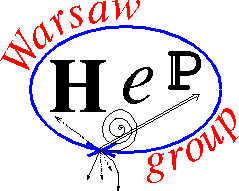SEMINARIUM FIZYKI WIELKICH ENERGII
Dnia 5 czerwca (piątek) o godzinie 10:15, odbędzie się seminarium, na którym zostanie wygłoszony referat pt.:
The Hyper-Kamiokande experiment.
Referuje: dr hab. Justyna Łagoda (NCBJ)
Abstract:
Hyper-Kamiokande (HK) is a proposed ~200 kiloton water Cherenkov detector, a continuation of the highly successful neutrino and proton decay program based in Japan. It was approved in February 2020 by Japanese parliament and is expected to start taking data in 2027. Having the fiducial mass of ~8 times larger than its predecessor, Super-Kamiokande, HK will offer a broad physics program, including precise measurements of atmospheric, beam, solar and supernova neutrinos and searches for nucleon decay. The talk will cover the main physics goals of the experiment as well as technical information on the detector and its expected performance.
Serdecznie zapraszamy
dr hab. Katarzyna Grzelak
prof. dr hab. Jan Królikowski
prof. dr hab. Aleksander Filip Żarnecki
The meeting will take place on zoom.us platform.
Zoom meeting link: https://zoom.us/j/176261850
https://us02web.zoom.us/j/176261850?pwd=cWgzMkwvVjBTSm5ObTFMSnBPTndIQT09
Zoom meeting ID: 176 261 850
Password: 8z2bfx

